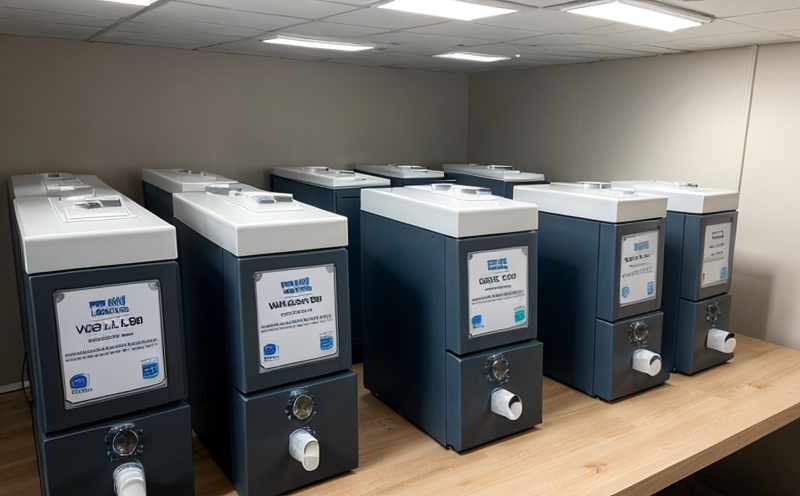ISO 14184-1 Textiles Determination of formaldehyde content Free and hydrolyzed form
The ISO 14184-1 standard provides a method for determining the total amount of free and hydrolyzable formaldehyde present in textiles. This is crucial for ensuring consumer safety, particularly when dealing with products that come into direct contact with skin.
Formaldehyde can be present in various forms within textiles—free formaldehyde or as a hydrate, which may release formaldehyde under certain conditions. The standard outlines specific procedures to accurately measure these forms of formaldehyde using a combination of extraction and titration techniques. This method is particularly important for the textile industry where products like clothing, bedding, and other home textiles are concerned.
The process involves the following steps:
- Sampling: A representative sample of the textile material is taken according to standard sampling methods.
- Extraction: The extracted formaldehyde content is determined using a hydrolysis method, which converts both free and hydrolyzable forms into a single form.
- Titration: Titration is performed to measure the amount of formaldehyde liberated into solution. This is done using either an acetic acid-sodium acetate buffer or a sodium borohydride-acetic acid mixture, depending on the method used.
The results are reported in milligrams per kilogram (mg/kg) of dry textile material. Compliance with this standard ensures that products meet safety requirements set by regulatory bodies such as REACH and Oeko-Tex Standard 100. This testing is essential for manufacturers to ensure their products do not pose a risk of formaldehyde exposure, thereby maintaining consumer trust.
The importance of ISO 14184-1 cannot be overstated, especially in industries such as fashion, home textiles, and healthcare where the skin comes into direct contact with fabrics. By adhering to this standard, manufacturers can mitigate health risks associated with formaldehyde exposure. This testing also helps in maintaining brand reputation and ensuring compliance with international regulations.
Benefits
The implementation of ISO 14184-1 ensures a high level of safety for consumers by eliminating the presence of harmful formaldehyde in textiles. This is particularly beneficial for:
- Protecting consumer health and well-being.
- Maintaining brand reputation through compliance with international standards.
- Avoiding legal issues related to non-compliance.
- Increasing market access by meeting regulatory requirements in various countries.
For R&D engineers and quality managers, this testing offers a precise method for ensuring product safety. It also allows for continuous improvement of manufacturing processes to meet ever-evolving standards. For compliance officers, it provides a clear pathway to ensure that products are free from harmful substances.
Quality and Reliability Assurance
- The testing process is meticulously controlled to ensure accurate results. This includes precise sampling techniques, standardized extraction methods, and rigorous titration procedures.
- Our laboratory uses state-of-the-art instruments and equipment that adhere strictly to ISO 14184-1 requirements for accurate measurement of formaldehyde content.
- We employ highly trained technicians who are certified in performing these tests according to international standards. This ensures consistent and reliable results every time.
Our commitment to quality is further reinforced by our adherence to ISO 9001:2015 for quality management systems, ensuring that all aspects of the testing process are continuously monitored and improved.
International Acceptance and Recognition
The ISO 14184-1 standard is widely recognized and accepted across numerous countries, including the United States, Europe, and Asia. This makes it a prime choice for textile manufacturers aiming to meet global standards.
This standard is particularly important in ensuring compliance with regulations set by organizations such as REACH (Registration, Evaluation, Authorization and Restriction of Chemicals) and Oeko-Tex Standard 100. These regulations are designed to protect consumers from harmful substances like formaldehyde, which can cause irritation or other health issues.
By adhering to ISO 14184-1, manufacturers can ensure their products meet the strictest international standards and gain access to global markets. This is especially beneficial for companies that operate internationally or aim to export their products.





